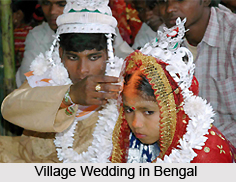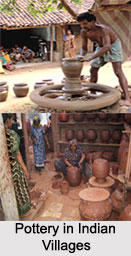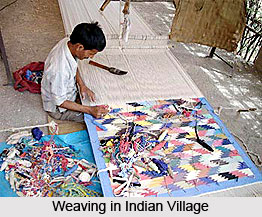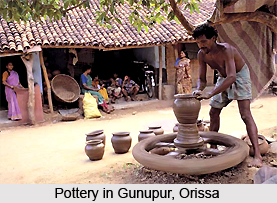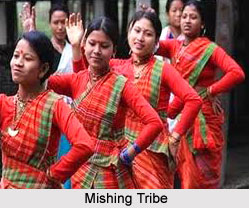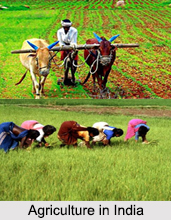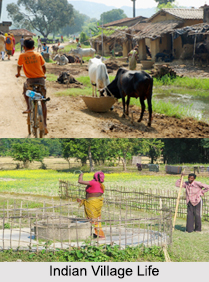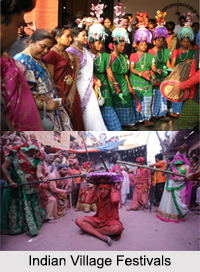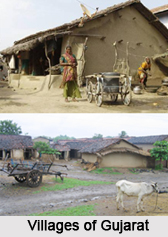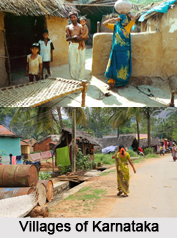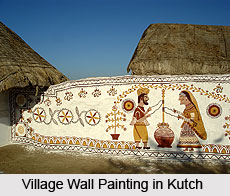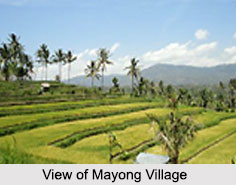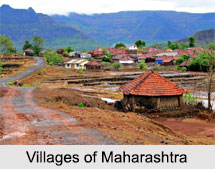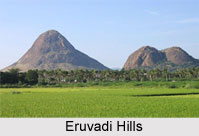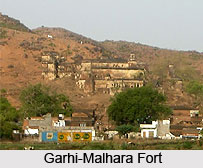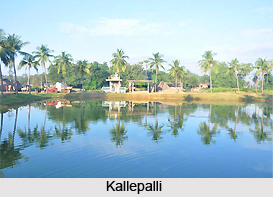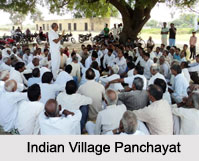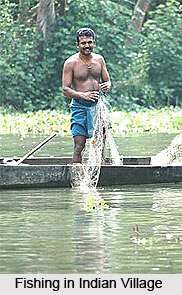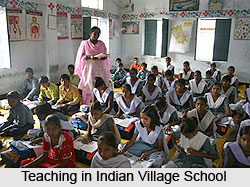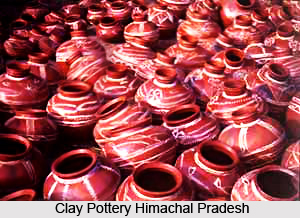 Pottery of Northern India includes the multiple forms of pottery prevalent in several parts of the Indian states like Jammu and Kashmir, Himachal Pradesh, Punjab, Haryana and Uttar Pradesh. Each of the state possesses a distinct characteristic and style, which sets them apart from the pottery crafts of other portions of the nation. Objects like cups, `murtbans`, vessels, plates, pipe bowls, `hook` stands and many others are created by the potters of these regions. Various kinds of pottery craft is exhibited by all these states.
Pottery of Northern India includes the multiple forms of pottery prevalent in several parts of the Indian states like Jammu and Kashmir, Himachal Pradesh, Punjab, Haryana and Uttar Pradesh. Each of the state possesses a distinct characteristic and style, which sets them apart from the pottery crafts of other portions of the nation. Objects like cups, `murtbans`, vessels, plates, pipe bowls, `hook` stands and many others are created by the potters of these regions. Various kinds of pottery craft is exhibited by all these states.
Pottery of Jammu and Kashmir
Ladakh consists of two forms of pottery-making: one with coloured and big images painted on the pottery handicrafts which are meant for decorating Buddhist monasteries and the other which involves crafting pottery products like wine pots, oil lamps, kitchen stoves and kettles. `Zama` is a favourite pottery artefact of the local people. It`s a vessel which stores barley beer. Another popular pottery work of Ladakh is the tea kettle. Local craftsmen of this region prepare statues which grace Buddhist monasteries at Hemis and Thickset. Kashmir`s glazed pottery, which is also known as Dal Lake Gate pottery is quite famous in the country. Flower vases, painted in colours like red, blue and green can be found in this place, especially Chirar-e-Sharif town, which is located near the shrine of Nund Rishi.
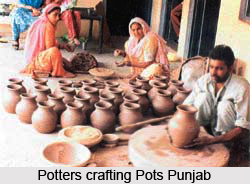 Pottery of Himachal Pradesh
Pottery of Himachal Pradesh
Potters of Himachal Pradesh are referred to as `kumhars` by the natives. They create beautiful handicrafts like lamps, money banks, toys, pots, bowls, pitchers, flower vases and numerable other items from clay. `Golu` clay is utilized to craft these objects and white patterns are drawn to decorate them. Different kinds of pots are made in this state, which serve a variety of purposes. The `gharra` is used for preserving water, `gharau` for boiling milk, `girriya` is used to store `ghee`, `Handi` for the purpose of cooking, hooka and `chillum` for smoking tobacco, and several other forms of containers in different shapes and sizes. `Auli` is a ceremonial pot, used in marriages. Himachal Pradesh is enriched with legends which have indicated the existence and significance of pots, potters and the wheels utilized in making pots and pans.
Pottery of Punjab
Punjab has a rich cultural tradition of crafting marvellous pieces of potteries since centuries. Typical pottery products of Punjab include containers for conserving water, locally called `ghara` and `surahi`, jars, clay toys, dishes and others. `Blue pottery or ceramic painting is an important pottery craft of Punjab. Multan and other portions of undivided Punjab (now belonging to Pakistan) are renowned centres for this kind of pottery work.
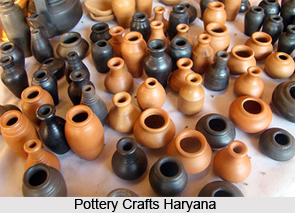 Pottery of Haryana
Pottery of Haryana
The rural economy of Haryana emphasizes largely on Pottery art, which is a significant occupation for the local villagers in this state. The main chore of churning out pots is performed by the men of the village, while the womenfolk engage themselves in colouring the containers and decorating them. The clay which remains after creating the pots is used to manufacture clay toys by the village women. Utilitarian items, as well as house decoration items are crafted by the clay artisans of Haryana. Villages in Pinjore, Jhajjar and Bahadurgarh are capable of making all such pottery items in the state. Plates, bowls, cups and water containers are made in the Rohtak area, which attain reddish or brown colours. Modern pottery of Haryana includes glazed pottery.
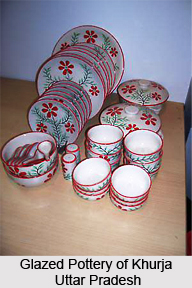 Pottery of Uttar Pradesh
Pottery of Uttar Pradesh
Uttar Pradesh has retained its ancient traditional custom of building exclusive pottery crafts which are mainly containers of various sizes and shapes which are essential for several purposes. Khurja area in this state is well-known for its ceramic pottery. Dark colours are generally utilized, along with relief work which adorns the pottery here. The other colours often used to paint the pottery items are brown, orange and light shade of red, against a white background. Floral patterns add glitter to the local decorative artefacts.
Water pots or `Rampur surahis` of Uttar Pradesh are adorned with greenish-blue colour, which are much sought after in the country. Other parts of this state are Hapur and Meerut which are famous for their water vessels. They are designed with floral patterns. Chinhat is yet another place in Uttar Pradesh which creates reputable glazed pottery. Bowls, flower vases and saucers are the multiple products which are made in this area. Nizamabad, located in Azamgarh district, Uttar Pradesh, creates beautiful black pottery on shiny black surfaces with embedded silver designs. The Mughal emperor Aurangzeb is believed to have introduced this unique craft to Nizamabad.
Pottery as a craft varies from state to state so while in Uttar Pradesh shades of pottery are in colours like orange, brown and light red, Kangra in Himachal Pradesh has rich tradition of pottery in black or dark red.
In Haryana pottery is a village craft where the kick-operated type is common. Delhi has a tradition of blue pottery, which has a unique style of its own. Pottery artisans of Northern India use a socketed block-wheel to make the pottery products and squat comfortably on the ground during the process of crafting pots.
